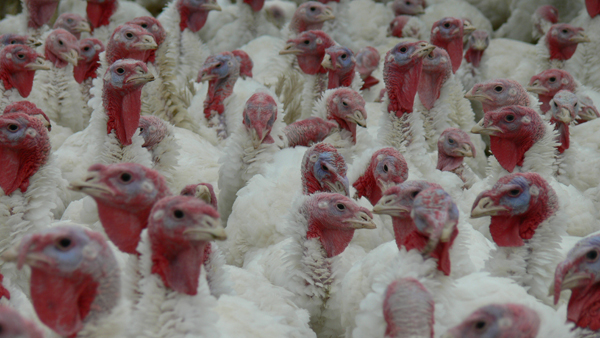Advantages of Wood Heat for Commercial Poultry Production
Viking Company of Albany, MN, along with partners Clean Energy Resource Teams and the Agricultural Utilization Research Institute, are pleased to announce the release of their findings report on the Advantages of Wood Heat for Poultry field study.
The demonstration project field-tested a 1.65 million Btu (British thermal unit) wood chip furnace in a live commercial poultry operation. The wood furnace demonstrated considerable fuel cost savings against historically low liquid propane prices, saving an average of $8,029 per year against liquid propane prices just above $1.00 per gallon. As anticipated, fuel cost savings from using woody biomass were highest in the colder months when thermal demand is greatest.
Viking Company observed additional flock production benefits beyond fuel cost savings, including reduced bird losses and improved feed conversion. These indicators point to an effective cost savings for poultry producers and their integrators. Though beyond the scope of this energy project, future studies that prove out these benefits could make this technology a “no brainer.”
About the field study: The project, funded by the Minnesota Department of Agriculture’s Agricultural Growth, Research and Innovation Program (AGRI), spanned 23 months and 12 flock rotations. Viking Company, an experienced poultry growing operation, hosted and operated the wood furnace in its two-story broiler chicken barn as a test. An identical barn heated with liquid propane immediately adjacent to the test barn served as an experimental control to observe differences in operability, fuel costs, and flock production
Following the successful pilot project, Bill Koenig of Viking Company is actively pursuing the design and financing of a more universally applicable biomass heating plant in their remaining conventionally LP heated chicken barn. “Lessons learned are telling us the overall initial cost can be significantly lower while retaining the positive benefits realized in the prototype system and securing safety and insurability,” Koenig noted.
To download a full copy of the report, please click here.
Denitrifying Bioreactor Performance with Agricultural Residue-Based Filter Media
The Agricultural Utilization Research Institute (AURI), in partnership with USDA-Agricultural Research Service (USDA-ARS), Minnesota Corn Research & Promotion Council (MCRPC) and the University of Minnesota (U of M) are pleased to announce the release of a new study, titled “Optimization of Denitrifying Bioreactor Performance with Agricultural Residue-Based Filter Media.”
The study examined the performance of agriculturally derived residue materials in denitrifying bioreactors. The report describes experimentation conducted by USDA-ARS to measure nitrate removal, microbial abundance and dissolved nitrous oxide gas. These are important measures because nitrate-nitrogen loss via drainage water is a widely concerning topic for farmers and agricultural communities. This study shows promise in reducing the size of bioreactors and lowering their costs via agricultural residue-based materials (e.g. stover, straw and corn cobs).
Utilization of these agriculture residue-based materials showed a potential benefit to Minnesota economic/environmental development. Given the greater nitrate-N removal rates of agricultural residues, there may be opportunities to reduce the size of the bioreactor unit, or to increase nitrate-N removal effectiveness within a given bioreactor footprint. Also, the proximity of agricultural residues to an edge-of-field bioreactor is a significant incentive to design a way to use them successfully.
The study also indicated a potential for reduced cost of implementation and maintenance of bioreactors using residue-based materials. In comparing the costs for installation of a denitrifying bioreactor designed to treat 50 acres, the study found that installation costs of a residue-based reactor may be 70% of those experienced when installing a traditional wood-based bioreactor.
The results of this project have also informed two additional research efforts to increase the rate of nitrate-N removal in Minnesota tile drainage water. Thus, the impact of the relatively modest project that is the subject of this report has continued well beyond the project’s scope.
To download a copy of the study, click here.
Additional published articles about this study can be found at:
https://www.ars.usda.gov/research/publications/publication/?seqNo115=318515
https://www.ars.usda.gov/research/publications/publication/?seqNo115=338220

